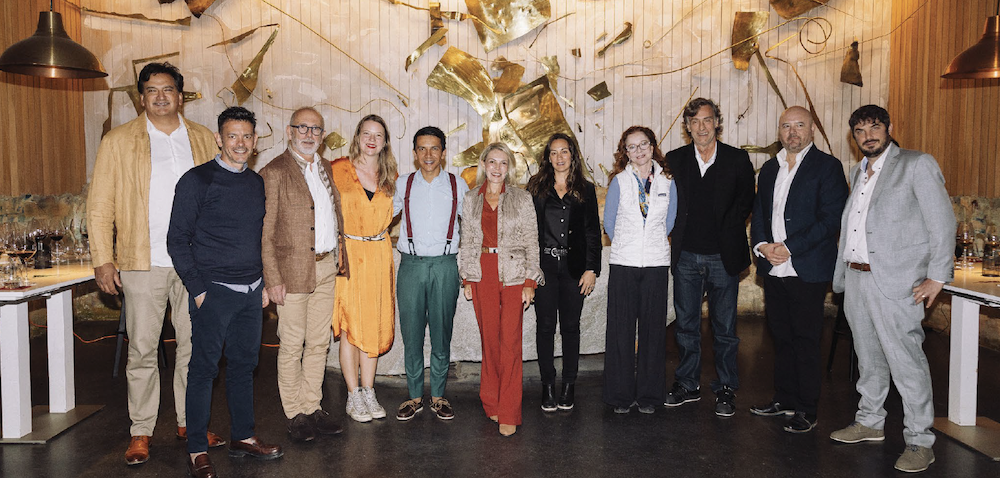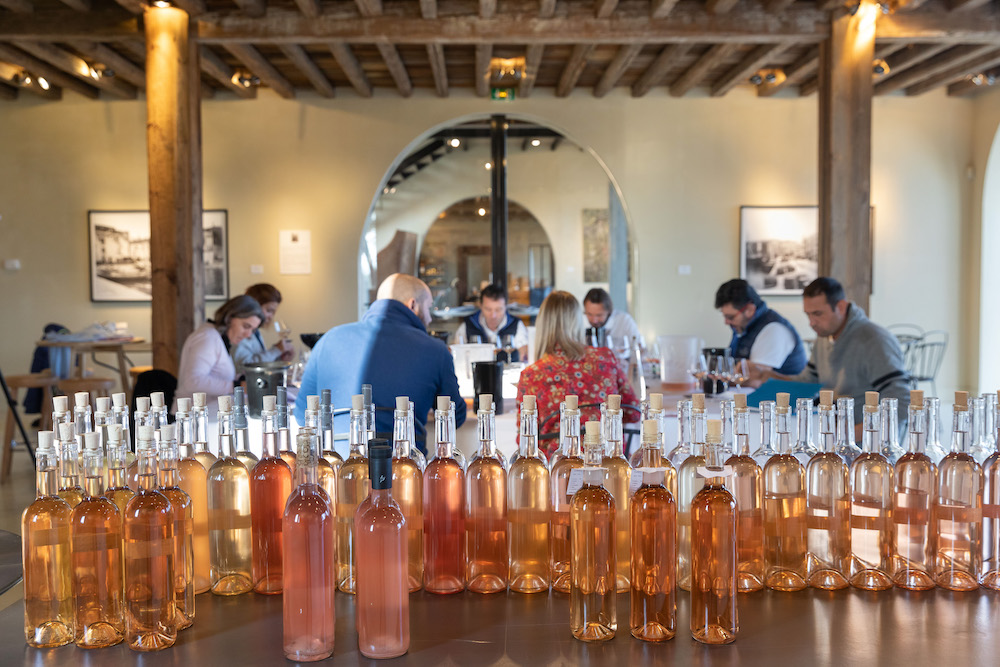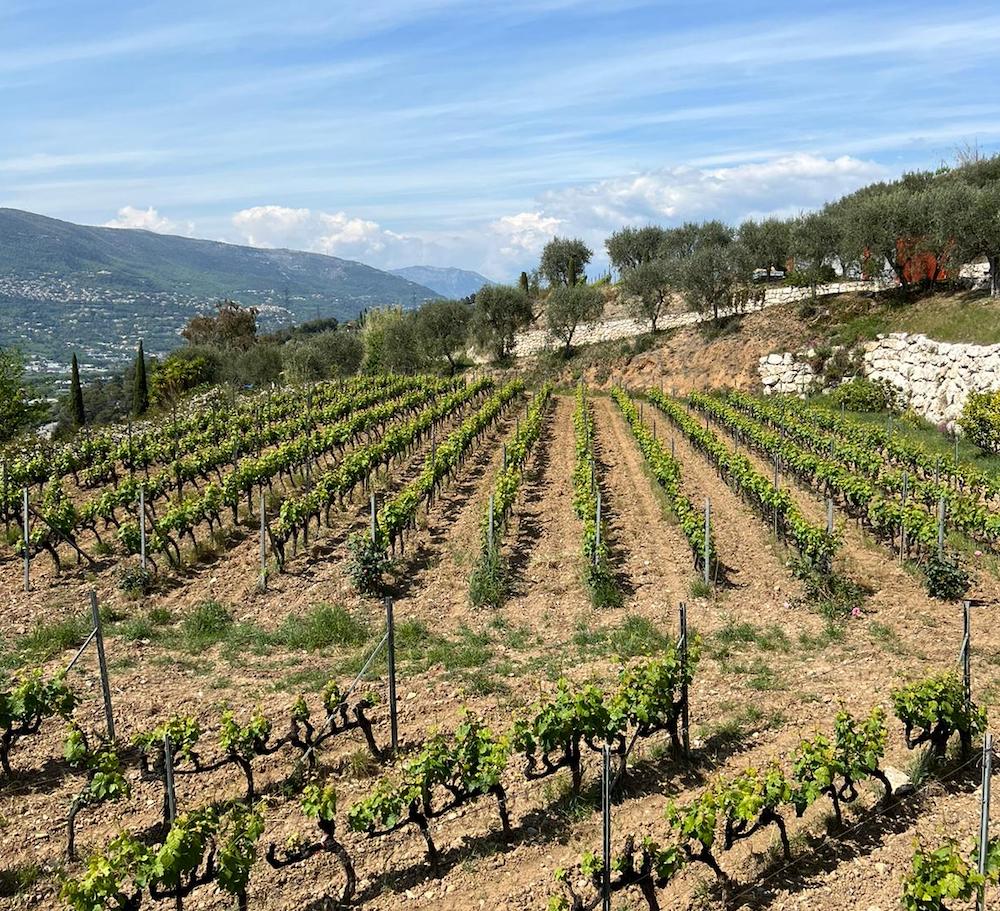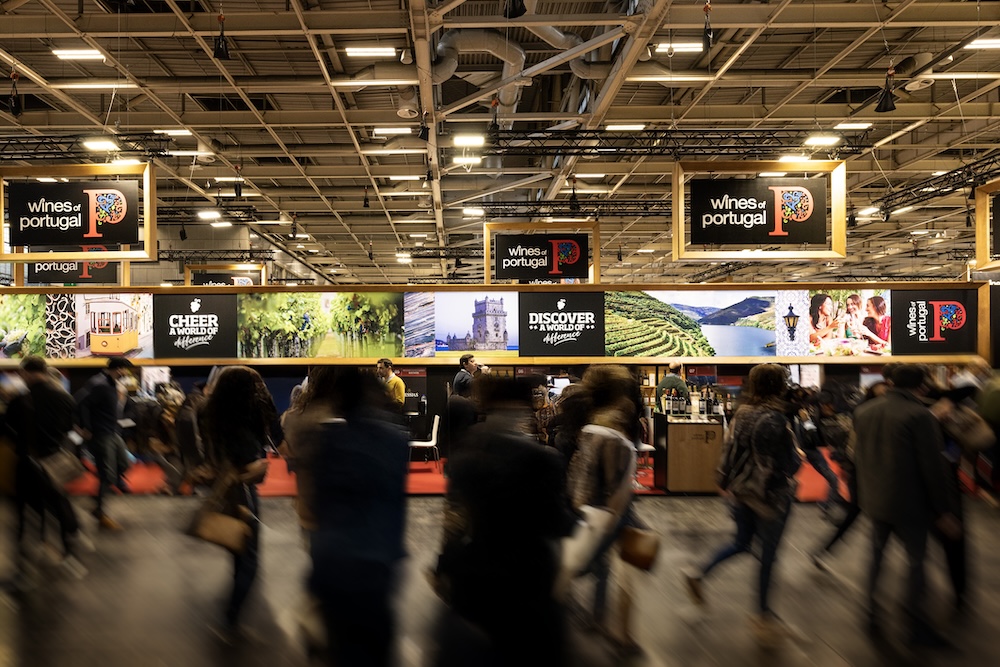
Discovery

Discovery
By Florian Glemont, DipWSET – Photographs: Courtesy of the estates, ©Iannis Giakoumopoulos, ©Serge Chapuis, ©Hervé Fabre, posted on 08 August 2022
The spirit of Provence lies in its wealth of culture, its distinctively French lifestyle and its incredibly varied, stunning scenery. Its pale-hued rosés have taken the world by storm but it is also replete with less publicised treasures and singular vineyard sites and wines which have forged a strong identity for the region, and made it a prime location for wine.

The history of the vineyards of Provence dates back to Ancient Greece. Despite this historical precedence, the region’s shallow soils and extensive forests of pine trees and oaks prevented it from going down the route to mass production in the footsteps of neighbouring Languedoc and the southern Rhone Valley in the last century. The intensive development of tourism and rosé’s move upmarket beginning in the 2000s acted as a driving force, catapulting Provence into the global arena as a showcase for rosé, which now accounts for virtually 90% of production. This success has cast a shadow over the region’s white and red wines, which are not only magnificent and extremely noteworthy, but also boast genuine identity. Set between the Mediterranean and the pre-Alpine foothills, Provence is host to myriad vineyard sites, all with differing features and climatic influences. Vineyards near the coast bask in a Mediterranean climate and breezes rising off the sea, mitigating the heat of the summer. The more northerly sites are often barred from this maritime influence by uplands and therefore experience a hot semi-continental micro-climate. This is when the cooler, dry Mistral wind descending from the Rhone Valley, along with the cool air currents tumbling down the surrounding hills overnight, help the fruit retain their freshness during the ripening period. And that is a prerequisite for crafting fine Provence wines.

Nestled at the foot of the extensive limestone range of the Sainte-Victoire, in the village of Puyloubier, Château Gassier boasts a magnificent location in the very heart of the Côtes de Provence-Sainte-Victoire appellation area. Georges Gassier, the chateau’s winegrower, represents the family’s fifth generation of winegrowers which took over in 1982. The entire 40-hectare vineyard was certified organic in 2016, with Olivier Souvelain – at the property’s helm since 2010 – providing the catalyst for the switch-over. Driven by boundless determination to secure a world-class reputation for Provence’s winegrowing heritage, he has paved the way for Château Gassier to rank among Provence’s finest wineries, primarily by executing a very ambitious strategy to move its rosés upmarket. The Elevae label is at the very pinnacle of the chateau’s collection of wines. It is only produced in the best vintages from strict single-vineyard selection of the finest Grenache, Syrah and Rolle grapes. This outstanding wine is then matured in Austrian demi-muids for 24 months, which lends the wine a touch of oxidation, volume, length on the palate and aromatic complexity that is virtually second to none. Produced in boutique quantities of a few thousand numbered bottles, this age-worthy rosé has opened up new avenues for top gourmet-food-style rosés. Château Gassier’s rosés are shipped to 60 countries worldwide, and are served on first class Air France and American Airlines flights. The Château has prioritised the development of wine tourism and hosts many events, including concerts, afterwork evenings, estate visits, open-air cinema projections and even a major sommelier challenge.


Wine is a tradition that dates back a long way in the Sumeire family. Written documents dating from 1238 point to the family’s involvement in the Provence wine scene. The family currently owns three chateaux in Provence, but ‘Coussin’ is located in the village of Trets, facing the Saint-Victoire mountain immortalised by Cézanne. Its vineyards are considered to be among France’s earliest and are surrounded by copses, providing a natural habitat for remarkable biodiversity. The climate is semi-continental with the sea breezes mostly blocked by Mount Olympe and, further South, by the Aurélien range. Despite this, the Mistral wind, whilst lessened by the Sainte-Victoire in the North, manages to find its way through to the vineyards, cooling night time temperatures and carrying the dry air needed to reduce fungal diseases. Located between 250 and 350 metres above sea level, the vineyards grow on clay-limestone soils which allow the local grape varieties to display finesse. Obviously most of the wines are rosé, but the chateau also produces a red wine delivering very pure aromatics – the César à Sumeire label. It is only produced in the best vintages and released after several years of bottle ageing, “for as long as it takes for the wine to rest”. The Syrah-dominant structure is bolstered by adding 20% Cabernet-Sauvignon. No wood maturation is used, echoing Sophie Sumeire’s ethos of letting fruit purity and balance express themselves. “You don’t need make-up when you have natural beauty”, is her expression which pretty much sums up her core philosophy. The remarkable intensity and fine tannins lend the wine substantial ageing capacity, so that its complexity can be fully savoured.

Château de Pourcieux was built in 1764 by the last lord of Pourcieux. This magnificent Aix country house has been listed as a French historic monument since 1993. Michel d’Espagnet, who descends from the original lineage, would have made his forbears proud. He is now extremely proud himself to be able to sit back and let his children gradually take over the reins of the chateau. His son Rémi, a trained winemaker and the estate’s cellarmaster, has been tasked with making the chateau’s wines for the past five years. His daughter Alix, who graduated with a master’s degree in international wine and spirits trade, quite naturally took over the export department. Michel d’Espagnet sensed the potential for rosé wines in the American market as early as 1992, and his enterprising spirit rapidly reaped rewards. At a time when exports of rosé to the United States were in the embryonic stage, he was already shipping up to 120,000 bottles a year there (75% of output). This made him the largest marketer of rosé across the pond, “before the big guns arrived in the 2000s”. The vineyards cover 27 hectares and are in their final year of conversion to organic. Approximately 60% of them are entitled to the complementary geographical designation (DGC) Sainte-Victoire, which can be appended to the Côtes de Provence appellation. The DGC was the first to be awarded in 2005 and to be officially listed by INAO as a Côtes de Provence appellation growth. It was hived off because of its unique soil types and semi-continental micro-climate. The overall quality of wines labelled as Saint-Victoire has been universally recognised: “Market response has been unequivocal – DGC Sainte-Victoire sells for 150% of the market price for AOC Côtes de Provence without the DGC”. And that certainly has to bode well for future generations of the family.

In 2011, top French industrialist and owner of Quinta do Pessegueiro in the Douro Valley in Portugal, Roger Zannier bought Château Saint-Maur, a Provence Cru Classé situated in the gulf of Saint-Tropez. Under the direction of Marc Monrose, the team’s ambition is to create a luxury rosé. Immediately after the acquisition, therefore, the vineyards were thoroughly restructured in order to bring them up to speed, with the first wines released in the 2014 vintage. The 100-hectare vineyard is currently being converted to organic and is divided into three blocks – Saint-Maur and Clos Saint-Vincent, where the weather is distinctly maritime in influence, and Clos de Capelune, overlooking the gulf of Saint-Tropez from an altitude of 449 metres, making it the “highest block in AOC Côtes de Provence”. The vineyard soils here are clay-limestone with a basis of schist and quartz and they bring out “totally different characters from the same grape varieties grown in vineyards along the coast”. This is the home of grapes used to make Château Saint-Maur’s top drops, which contribute tension and aromatic intensity to the wines. The Clos de Capelune Rosé label is blended from Syrah, Cinsault and Grenache and fully expresses the potential of these Provencal vineyards with great elegance and intensity. In the same range, the white single varietal Rolle Clos de Capelune label is a typical rendition of Provence Rolles that have the ability to convey the saline character of the soils to the wine. Marc Monrose is adamant that “even if the market for Provence rosé is very bullish at the moment, white wines have great potential”. Château Saint-Maur certainly intends to ramp up production over the coming years.

The winegrowing saga of the Devictor family began in 1980 when young agricultural engineer François fell in love with Domaine de la Sanglière in Bormes-les-Mimosas, just a stone’s throw away from the Mediterranean. Three generations now work side by side at this idyllic property – Rémy and Olivier, François’ two sons, who were recently joined by Pierre, his grandson. Olivier is not only the estate’s viticulturist, he also chairs the La Londe Complementary Geographical Designation committee within AOC Côtes de Provence. DGC La Londe boasts 33 producers and a potential of 1,200 hectares under vine – it also has a unique location. Its coastal situation draws in sea breezes every day which mitigate the soaring summer temperatures and cool the air overnight, allowing the fruit to ripen effortlessly. The poor, shallow schist soils lend the wine unmistakable terroir character with remarkable finesse and freshness. Embracing four localities South of the Massif des Maures, it is Provence’s only DGC to recognise premium quality in all three colours of wine. Domaine de la Sanglière’s Prestige white label is produced from a specific block of Rolle vines, the highest on the estate. It fully encapsulates its specific terroir features through its fresh, precise acid backbone and iodine-like characters instilled by the maritime influence of the Mediterranean. Rolle adds aromatic complexity and a silky feel. The varietal characters are deliberately enhanced by fermentation and maturation for 7 months in demi-muids aged between 8 and 12 years old.


Vivien Paulmyer spent 10 years travelling the length and breadth of the Provence and southern Rhone vineyards as a supermarket buyer. His decision to move to Aix-en-Provence and set up his own trading company for Provence rosés in 2017 – Les Monopôles – was therefore the logical next step. As a wine enthusiast, Paulmyer likes his passion for wine to be widely shared. His vision is about as far as you can get from elitist and he aims to make wine accessible even to those with the smallest budgets. His strategy has paid off. His ‘Le Grand Bain’ label of AOC Coteaux d’Aix-en-Provence rosé, which was singled out for distinction in our tastings, totals a production volume of 200,000 bottles annually. It is widely distributed in supermarkets and hypermarkets at a very accessible price point for Provence wines. “The wine market is suffering, mainly from competition with beer. It is important to supply fresh, light, aromatic wines with the most affordable price tags in order for wine to gain traction again”. Paulmyer has taken his commitment a stage further by developing his own vineyard concurrently with this. He has already planted 3 hectares and plans to plant a further 5 next year. Driven by a profound sense of environmental awareness, he has subscribed to sustainable organic farming methods in order to leave future generations with healthy, living soils. “Organic should be encouraged more by politicians who should incentivise growers. There should be a strong incentive to switch, considering the risk of lower yields or even crop losses when fungal diseases are widespread. Customers pay attention primarily to the appellation and the price. If an organic wine from the same appellation is 30% more expensive, they will opt for the conventional or HVE alternative”.
Saint-Tropez born and bred Valérie Rousselle has been at the helm of Provence Cru Classé Château Roubine for nearly thirty years. She can now rely on the help of her three children, Adrien, Victoria and Léonard in managing the chateau, as well as two other recently purchased properties: neighbouring Château Béatrice and Domaine Chante Bise in the Côtes du Rhône area. Valérie has poured a lot of effort into securing recognition for Provence rosés worldwide. She created International Rosé Day, which has been celebrated since June 2018 in the town of Saint-Tropez where the citadel turns pink for the occasion. Over 50 Provence producers gather for the event and present their rosés to crowds of enthusiasts who also get to enjoy concerts and dance performances. Château Roubine’s vineyards are ringed by an amphitheatre of pines and oak trees. Out of a total 120 hectares, 72 are planted to vines and offer a showcase for 13 different grape varieties, including Sémillon and Rolle. The two varieties are blended to produce the ‘Lion et le Dragon Blanc’ label. Yields are low and the clay-limestone soils offer natural drainage into a stream – Roubine means stream in Provencal. The berries ripen to produce great aromatic concentration. Wild ferments start off fermentation in 400 to 600-litre French oak casks. This is followed by ageing on fine lees with batonnage for 8 months. The resultant wine is intense, bright and juicy. The fat stemming from the maturation process makes this a wine for gourmet food – it is appetising yet not too heavy and supported by a persistent mineral backbone.

Very often, wine and passion go hand in hand and that passion can give rise to some amazing projects. Domaine des Bergeries de Haute Provence is a case in point. The banks of the Durance, near Saint-Auban, in a setting that is more alpine than Mediterranean, are where former sommelier and keen wine enthusiast Jean-Luc Monteil successfully resurrected the previously well-established vineyard of Les Mées. Towering 550 metres above sea level, the vineyards were planted starting in 2017 on South-facing clay-limestone soils. The vineyard is like an open-air laboratory where no fewer than 11 grape varieties are planted on 6 hectares of land that had never seen chemicals. Likening the site to “the French foothills of the Alps”, Monteil quite naturally planted Barbera and Nebbiolo, along with Vermentino (Rolle) and Bianco Gentile, “imported from Corsica, which lends structure to two of the estate’s white wines”. The white Via Domitia (IGP Alpes de Haute-Provence) named after the famous Roman way which cuts through the valley, is blended from Vermentino, Viognier, Marsanne, Bianco Gentile and Sauvignon blanc and matured for 7 months in 750-litre amphorae. The mouthfeel develops in the amphora and brings out “the velvety expression of the limestone soils”, whilst retaining beautifully expressive minerality, “sometimes likened to characters found in Cassis and Chablis”. With its fresh, floral attack, the wine will most certainly be a centrepiece on tables in the finest gourmet restaurants this summer.

AOC Bellet was officially recognised in 1941. It boasts just 9 estates and 60 ha under vine grown across the lower foothills of the Alps overlooking the city of Nice. Perched at between 100 and 350 m above sea level, between the Mediterranean Sea and the Alps, the area basks in a sunny micro-climate. Its annual rainfall is in excess of 800 mm and it is buffeted by the dry, cold Mistral wind, which is channelled down through the Var valley and keeps the vines healthy. Every night, cold winds descend on the vineyards and prolong hang-time of the grapes, producing the perfect combination of phenolic and technological ripeness. The vineyards are grown along terraces, known locally as ‘restanques’. The soils known as ‘poudingues’ offer good drainage and are formed of agglomerated pebbles, sand and seams of clay. Alain Vallès, the chateau’s winegrower expounds further: “The soils instil intense fruitiness in the wines and maintain a high level of acidity”. The Bellet appellation offers a showcase for two characterful native grape varieties – Braquet for rosé wines, and Folle noir for reds. The 2016 red Château de Crémat label is blended from 75% Folle noire and 25% Grenache noir. Folle noire is a late-ripening grape variety, which is occasionally harvested at the beginning of October. Its berries display a good level of natural acidity and thick skins, which promote intense colour extraction. Despite this, its tannins stay supple and meld perfectly with those of the Grenache. “The 2016 vintage was exceptional in the region”, and demonstrated Folle noire’s extensive ageability. Supported by racy maturation for 12 months in demi-muids, the wine is intense, complex and generous. It offers up a saline feel, prolonging the delicate red fruit and dried flower flavours. Château de Crémat only produces 30,000 bottles of wine but intends to introduce wine enthusiasts keen to discover a new experience to its hidden gems by developing distribution in the domestic market.

Since the turn of the century, Provence has entered a golden age, boasting an international reputation built on solid foundations. The resounding success of rosé wine was the catalyst for this new-found reputation, with global consumption reaching 23.6 million hectolitres in 2019, up 23% on 2002. The most buoyant markets are France and the USA, respectively representing 35% and 15% market shares. Year after year, rosé moves further upmarket with average prices increasing by 29% between 2015 and 2019. Provence is rosé’s undisputed showcase and the driving force behind the global market. The development of oak-aged food-friendly rosés has opened up a whole new dimension, distancing the wines from their ‘swimming pool tipple’ image of the 2000s. There is still huge room for growth but leveraging it will involve making consumers aware of the top quality of Provence rosés. But although 90% of its wines are pink, this magnificent region is also home to characterful whites that make the perfect partner for superb summery gourmet foods. There are also the beautifully crafted reds made from offbeat grape varieties in unfamiliar vineyard sites. Whatever the choice, all of them are sure to provide ultimate enjoyment for the adventurous wine lovers among us.

Discovery

Discovery

Discovery